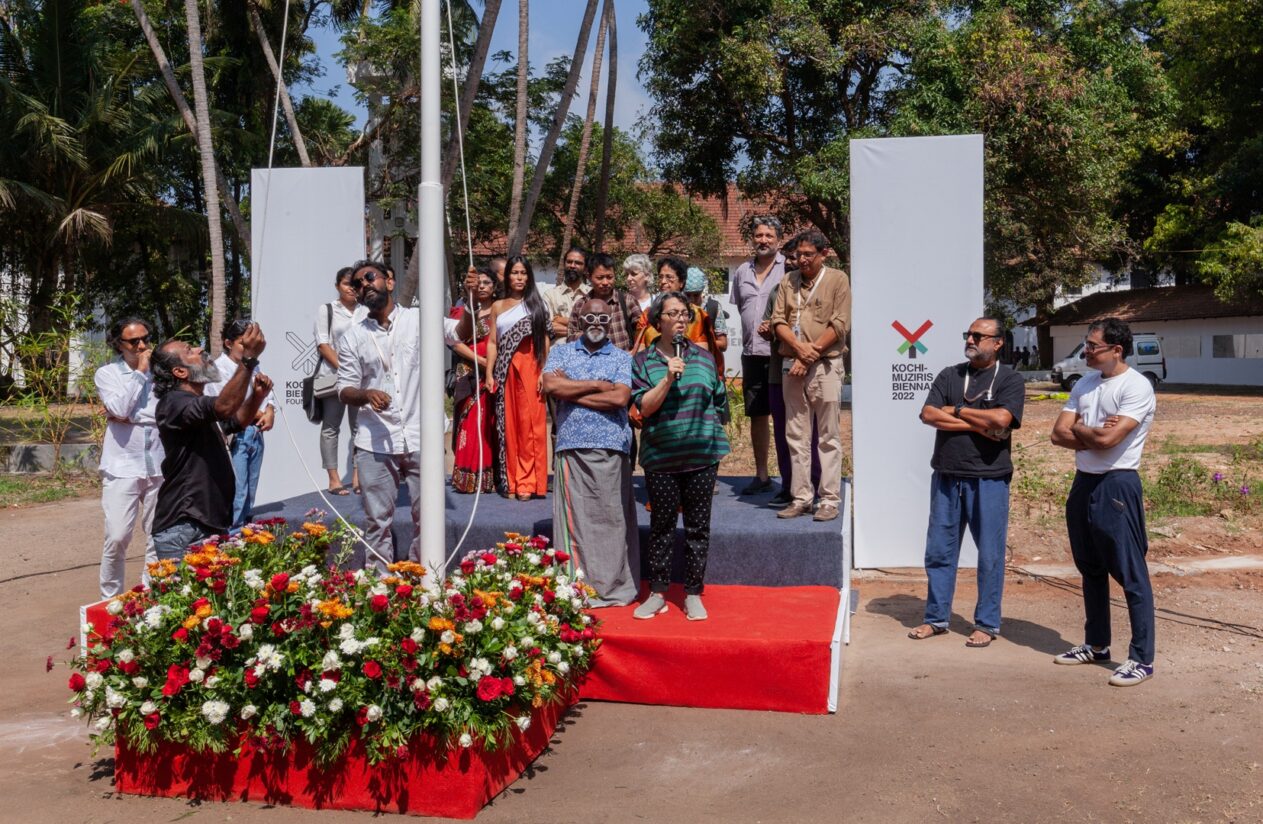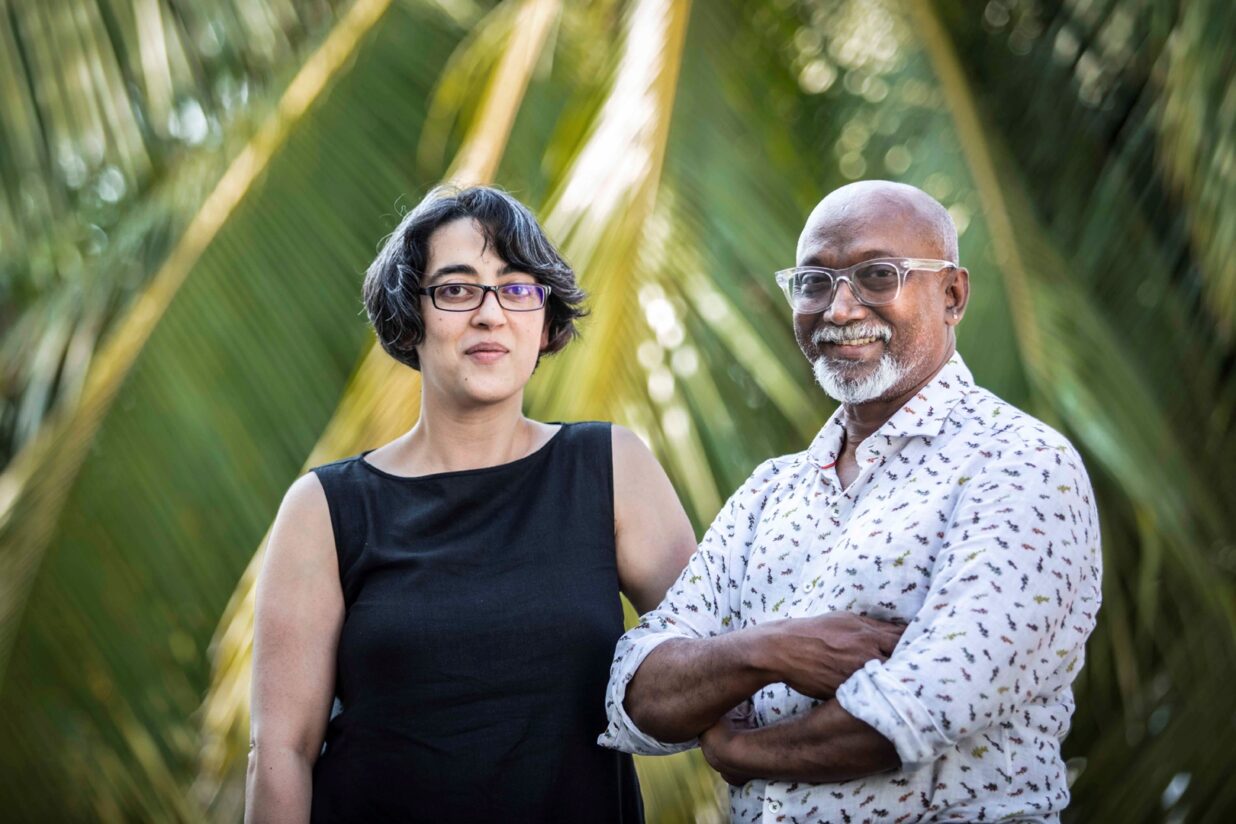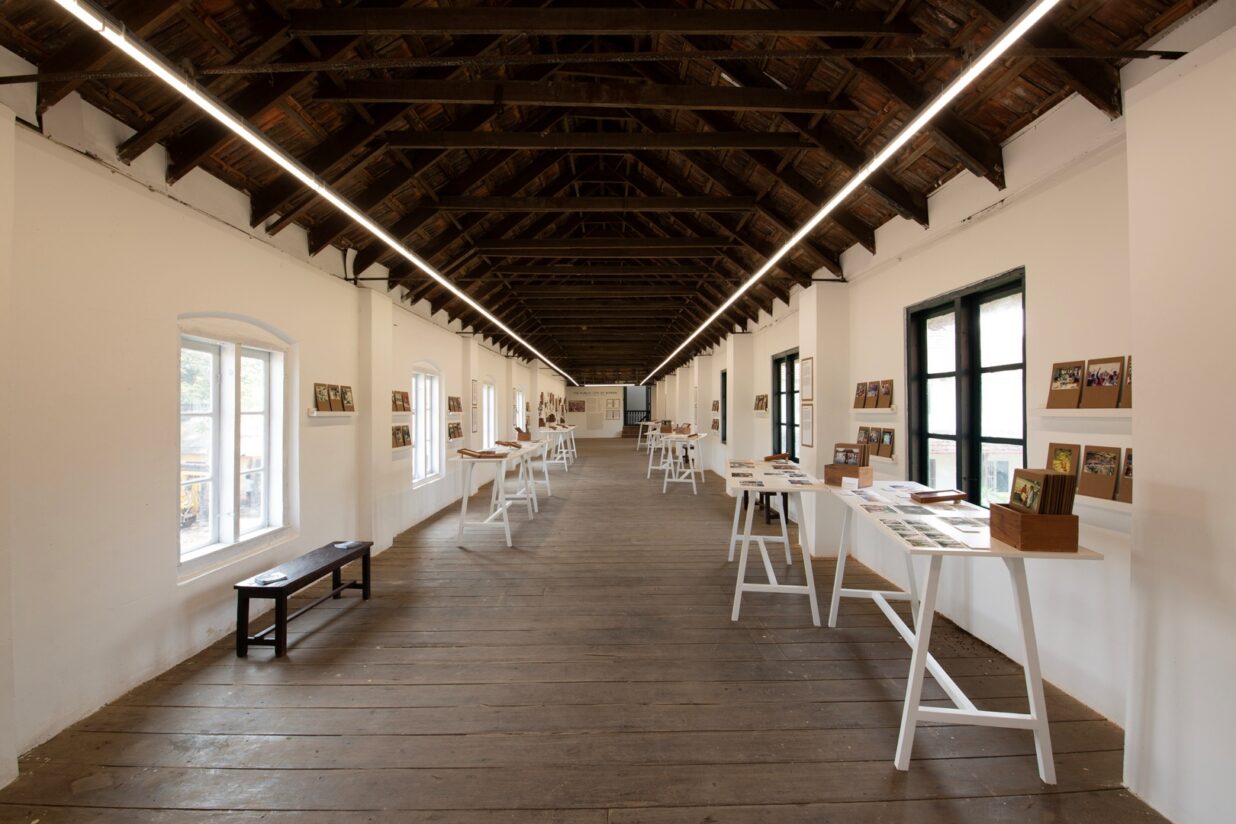Kochi Biennale is the Outcome of a Human Need to Tell Stories
The underlying theme of the 5th edition of Kochi Muzris Biennale: In our Veins Flow Ink and Fire, comes from the curator, artist, and writer Shubigi Rao’s unshakeable conviction in the power of storytelling as strategy, of the transgressive potency of ink, and the transformative fire of satire and humour. By Sindhu Nair
That the Kochi Muzris Biennale has had an impact on the cultural and artistic landscape of the state of Kerala is an understatement. There is a renewed sense of purpose in Fort Kochi after the lull of Covid lockdowns with its quaint little cafes, hotels and homestays reaping in business and tourists.
During the one month since its launch, over 240,000 people have visited the 5th edition of Kochi-Muziris Biennale (KMB). People belonging to all walks of life, including those from foreign countries and other states, are thronging Kerala, according to the figures released by the Organisers.
“That Kochi Biennale has been able to make arts popular at all levels and it is the most important and relevant fact proved by the increased people’s participation,” said Bose Krishnamachari, president, of the Kochi-Muziris Biennale Foundation. “Biennale erases all boundaries, including elitism. The elitist image that pulls common people away from art galleries is not to be found in the Biennale and it, in fact, rejects such notions.”
But all is not well, and the inner layers of working of The Biennale is said to have cracks with many organisational delays and miscommunication at the centre of the discord. Conceived as the first artist-led endeavour to ‘establish a sustainable platform for contemporary art in India’, it has shown flaws in this very intent multiplied by lesser funding than promised from the State Government, all of which stems from a lack of a proper structure in its functioning. An open letter from 53 artists, including artists from the UK, US, Singapore, recounts that the way the KMB is currently organised hinders the artistic process instead of enabling it.
Krishnamachari is in equal extent gratified at the power of art in bringing people to the Biennale while being disappointed with the artists’ closing ranks against the Foundation. He is also quite distressed that the platform conceived as an artist-led venture should have its first dissent from the artists themselves. But what seems evident is that it is time private institutions, governmental organisations and businesses around the KMB venues who are obviously benefitting from the Biennale, join forces and help in sustaining arts and culture of the State.
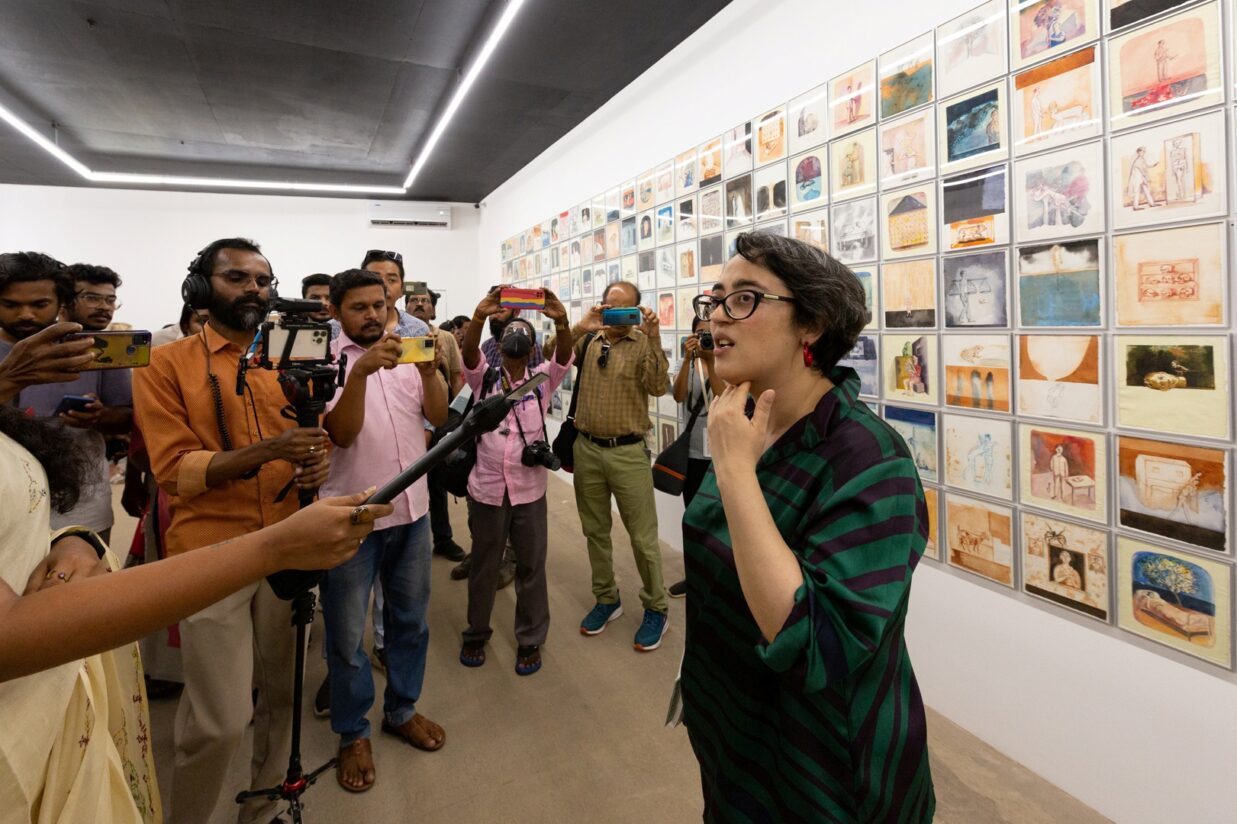 But none of the organisational delays or ways of functioning is evident at the venues where art takes precedence. For the visitors, the success of the KMB can be gauged from the enthusiasm of its volunteers, most of them architecture or art students or recent graduates who guide the visitors with a passion that is contagious. Directing visitors with their intense involvement and sharp understanding, KBM volunteers gives us hope, of a new generation, who seem to make time for art appreciation while remaining connected to oneself and the world. And binding all this together is the artists who have expressed themselves through their myriad ways, like the curator points out, “a wellspring of collective ideas”.
But none of the organisational delays or ways of functioning is evident at the venues where art takes precedence. For the visitors, the success of the KMB can be gauged from the enthusiasm of its volunteers, most of them architecture or art students or recent graduates who guide the visitors with a passion that is contagious. Directing visitors with their intense involvement and sharp understanding, KBM volunteers gives us hope, of a new generation, who seem to make time for art appreciation while remaining connected to oneself and the world. And binding all this together is the artists who have expressed themselves through their myriad ways, like the curator points out, “a wellspring of collective ideas”.
“I am immensely proud of the artists, their labour and their care – this shines through in the exhibition. Despite the difficulties we faced, we put together an exhibition that exemplifies collectivity, political conscience, intellect, and empathy. And we did this because of the people on the ground, the volunteers, and the workers,” says Shubigi Rao about the process, the delays, and the outcome of it all.
The curatorial process in each of the KMB is an important annotation that brings the vision and dream of the curator to light, each Biennale a new vision and the guiding factor for the visitor to understand the vision behind the creations within. This year, the curator Shubigi Rao, an Indian-born Singaporean-based visual artist-cum-writer who is a compulsive archivist known for her complex and layered installations, takes on the reins and illustrates her curatorial approach.
From the Nepal Picture Library titled ‘Women’s Public Life’ that takes a historical glance at how the call for presence in the public sphere has contributed to women’s empowerment in Nepal to Notes from a City Unknown by Seher Shah, both at Pepper Hall, and Uneven Twill by Ximena Garrido-Lecca that draws attention to histories of production and communication, each artist installation fundamental to the idea of bringing together interesting narratives that needs to be shared.
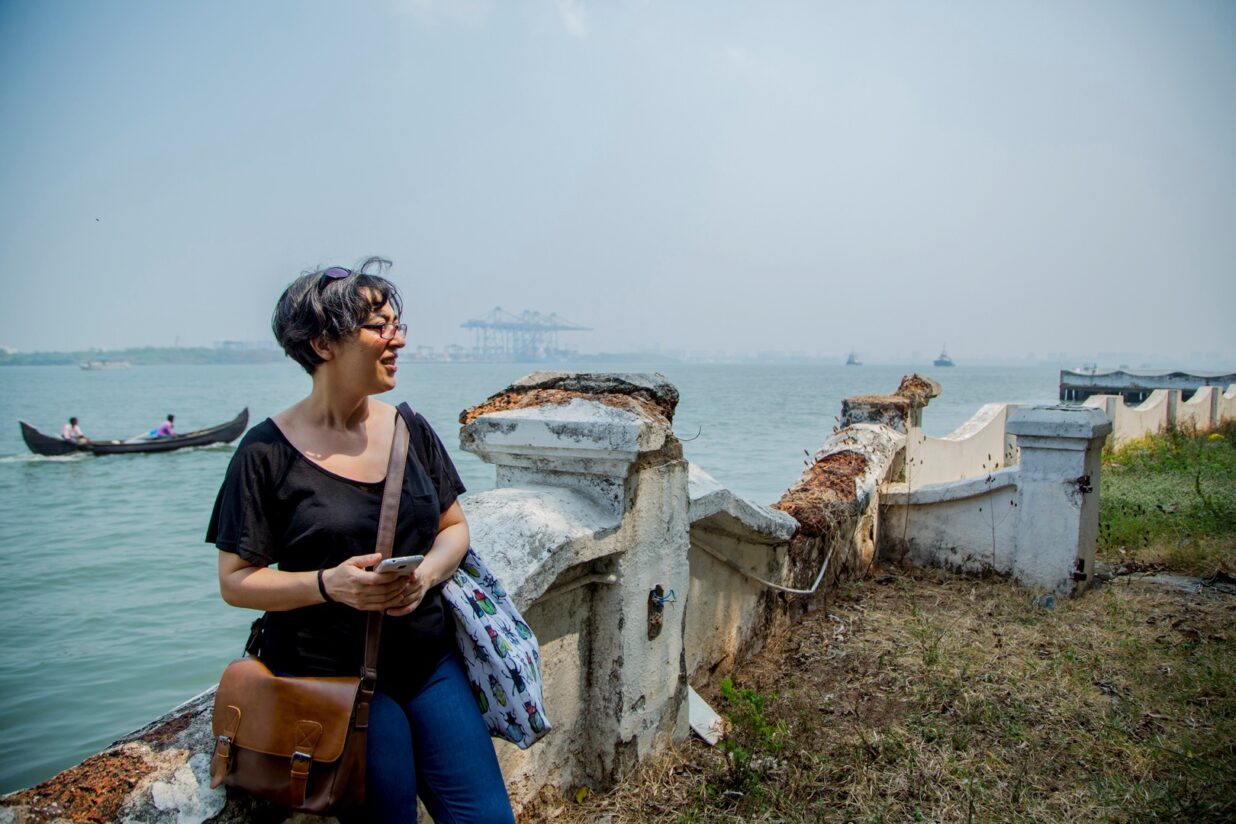 We try to find out more about the curatorial process from the curator herself.
We try to find out more about the curatorial process from the curator herself.
SCALE: What was the intent behind the theme of the exhibition: In our Veins Flow Ink and Fire?
SHUBIGI RAO: This is a line I wrote in 2018, in a drawing in one of my books, which celebrated the very human need to express ourselves, to share stories, and of the radical fire that accompanies this desire. It describes the constant flux and flow of intersecting narratives, while also acknowledging the emotional weight of storytelling. It encapsulates the warring impulses to create and share, and also to subjugate and destroy. At a time when bodily paranoia is heightened, and sociability is suspect, it is important to remind ourselves that our desire to share, to mingle, to listen and to be heard is a core imperative of our species.
SCALE: When did your curatorial process for KMB begin? Was it frustrating to work with deadlines that were extended because of Covid and later due to organisational delays? What do you have to say to artists who have expressed displeasure at the mismanagement of communication by KMB?
RAO: The pandemic changed people’s lives radically, and for artists it has also meant several projects getting pushed to 2022. We postponed the event twice, so several of them have already changed their work twice. When we were first supposed to show in 2021, the foundation was keen to adopt a hybrid approach, where people from within India could travel for the event and the international audience would view it online — at the time, several artists switched to digital and virtual media that they don’t normally work with. Consequently, this edition sees less production on-site than what I had envisioned and a higher than anticipated proportion of digital works, but that has resulted in a beautiful demonstration of the way artists have worked around challenges, using varied media. Music and song have become defining aspects of the Biennale, where one will listen to all kinds of sounds, from non-verbal to humming, human voice, animal sounds, disembodied noises and so on.
It’s important to realise that this edition has faced extreme challenges. The previous editions had resources that I was not given, and there have been massive personnel changes as well. Moreover, none of the venues were available to until very recently, and given that these places were shut for three years, major repair work needed to be done. This is just some of the problems we faced.
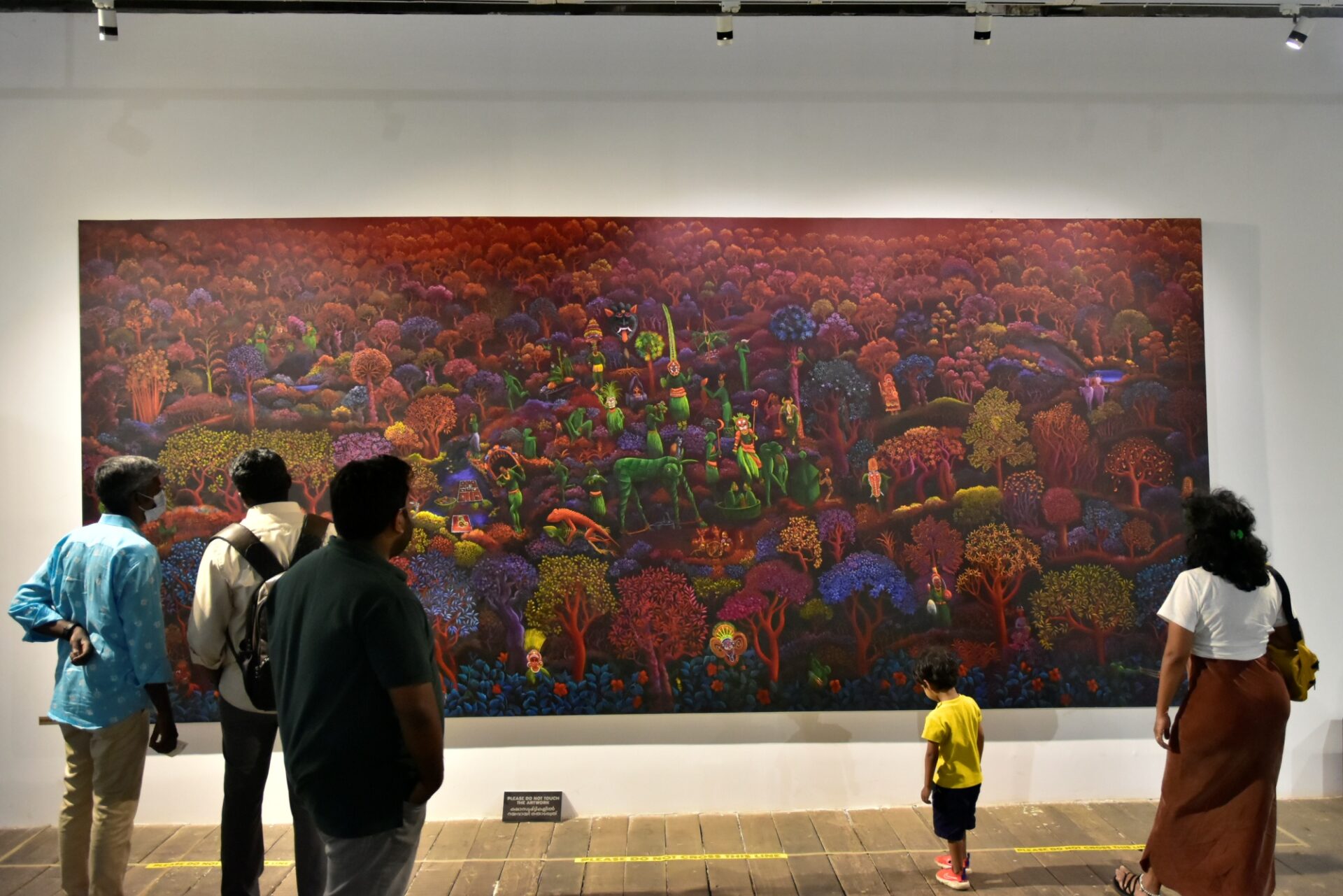
Beautifully depicting small creatures like scorpions and lizards, who have been sidelined by the mainstream, make it to the painting by famous Kerala artist G.S. Smitha who as brought the burning experiences of life to the Biennale.
SCALE: How did you arrive at the list of artists for Biennale? There have been some familiar names that attend the KMB… what was the process?
RAO: I travelled extensively during 2019 and early 2020, and selected the artist based on this research, plus my own knowledge of which artists I believed would best embody the principles I had in mind when I formulated my curatorial vision. One aspect of this vision was to try and build a community of sorts, to bring together artists who understood what it means to work collectively. Most the artists in the biennale exhibition were selected in 2019-2020, and have stayed on despite two postponements, and also formed a support network for each other through a very fraught installation period.
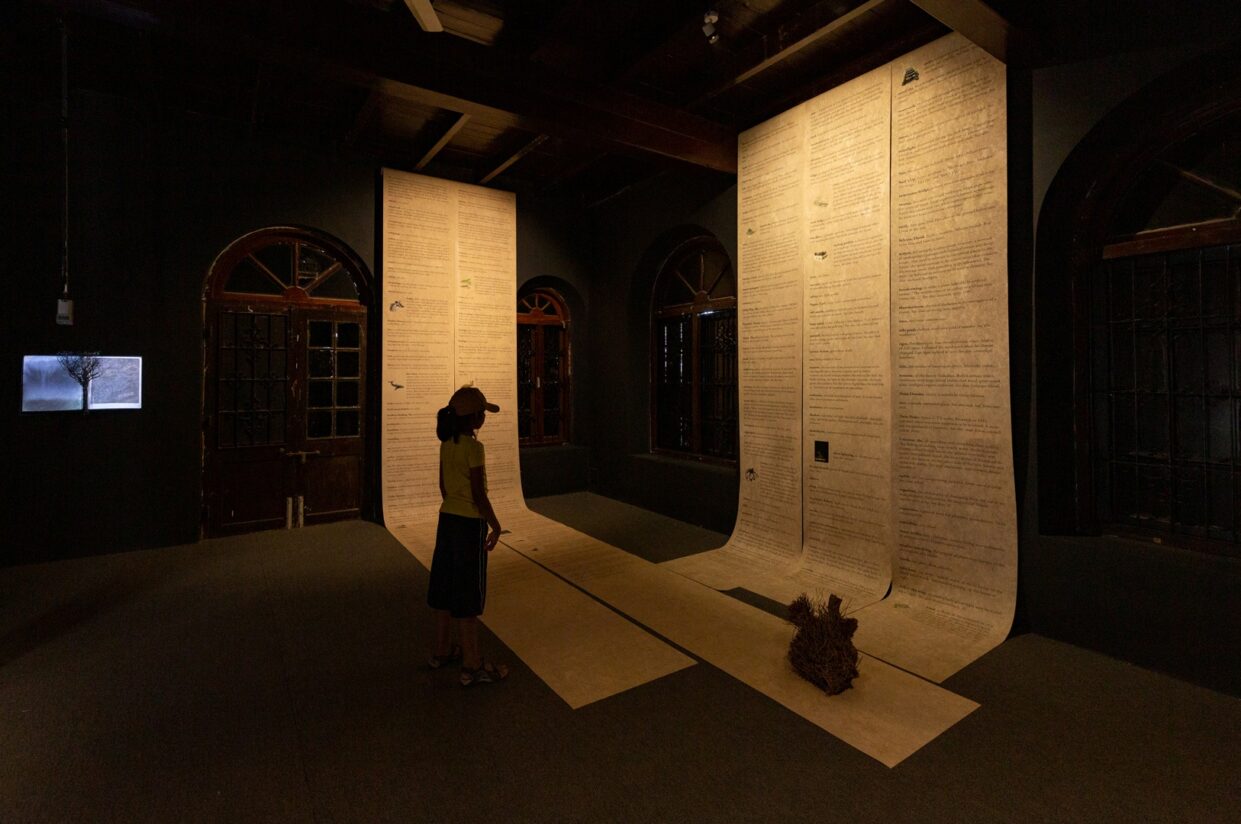 SCALE: Now when the curtains are finally up and people are visiting the Biennale, what do you feel as the ideator and the curator? Which works and installations are getting maximum viewers and interactions? Have there been some work that touched its viewers, much beyond your expectations? What do you feel looking at the Biennale now?
SCALE: Now when the curtains are finally up and people are visiting the Biennale, what do you feel as the ideator and the curator? Which works and installations are getting maximum viewers and interactions? Have there been some work that touched its viewers, much beyond your expectations? What do you feel looking at the Biennale now?
RAO: I am immensely proud of the artists, their labour and their care – this shines through in the exhibition. Despite the difficulties we faced, we put together an exhibition that exemplifies collectivity, political conscience, intellect, and empathy. And we did this because of the people on the ground, the volunteers and the workers.
I am reluctant to foreground a few practices over others, especially as illustrative examples. Each artist brings something unique to the exhibition and I am truly inspired by their contributions. It is inevitable that the physical isolation and restrictions experienced by a number of artists would inform their work. Yet, I can see their navigation, their rethinking of how they produce, being more evident in their work. As part of my curatorial conversation with them, a number of artists have taken these conditions in their stride and re-envisioned their work either entirely or in part. To me, this is part of the rethinking that I believe we must do given current instabilities and tensions. It is about recognising other forms of power within communities and collectives. In speaking with overlooked artists, emerging voices and collectives, I continue to believe that that the Kochi-Muziris Biennale is well-suited to hold these practices, ideas, and conversations from the majority world.
SCALE: As a writer/ artist, what do you bring to the Biennale? How has it helped the curatorial process?
RAO: It informs my curatorial approach quite heavily, of course. As an artist in conversation with other artists, I think about curating the KMB beyond the final production. For me, an artist curates from a space of empathy, practice and affinities – an understanding of craft, process, techniques and ways of seeing – whilst also acknowledging limitations, pressures and fatigue. While this edition celebrates the diverse strategies that artists conjure in the face of diverse circumstances, it will also celebrate process, method, technique, undercurrents and friendships. I decided to keep in abeyance the obvious aspects of my practice, whilst retaining the impetus and drives behind my work – the belief in storytelling as strategy, in the subversive power of humour, and in creating as resistance. This approach allowed for a porous process of research and underpinned my conversations with the artists I met across the globe. The impulse was to be taken by practice, ideas, nonconformity and to bring together a set of practices that spoke to me.
Images Courtesy: KMB 2022-2023


